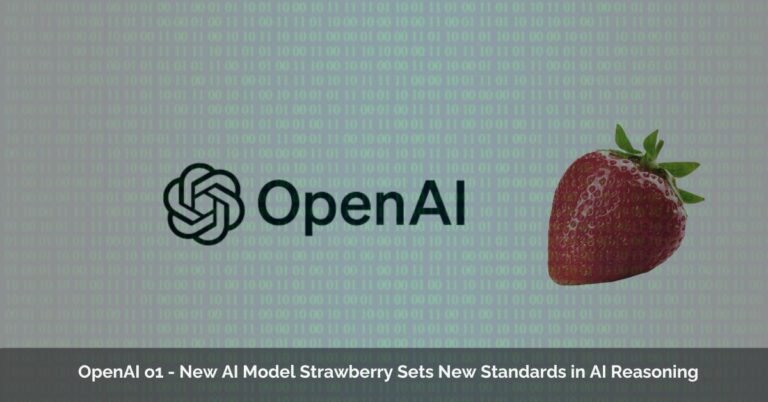Written By: Ameerah
What are FLOPs in Machine Learning: Counting the Math Behind the Magic
In the intricate world of machine learning, where algorithms learn and evolve like living things, there’s a hidden metric that reigns supreme: FLOPs. But what exactly are FLOPs, and why do they matter so much? Buckle up, data enthusiasts, because we’re about to dive into the fascinating realm of computational complexity and its impact on the models that shape our world.

What are FLOPs?
FLOPs, or Floating-Point Operations, represent the number of arithmetic operations a computer performs on floating-point numbers (think decimals) to execute a specific task. In machine learning, this task could be anything from classifying an image to predicting stock prices. Each addition, subtraction, multiplication, and division counts as one FLOP.
Imagine a deep learning model as a complex maze. Every turn, every decision point, involves calculations. The more intricate the maze, the more calculations, and therefore, the higher the FLOP count.
Diving Deeper into FLOPs: The Trade-offs Between Accuracy, Efficiency, and Resources
You’re absolutely right, FLOPs are much more than a simple price tag; they represent a complex interplay between several crucial factors in machine learning model development. Let’s delve deeper into each of the points you mentioned and explore the underlying mechanisms at play:
1. Increased Accuracy:
Imagine the human brain as a simple neural network. With limited neurons and connections, it can only learn basic patterns. Adding more neurons and connections (think increasing FLOPs) allows the network to process more information, recognize subtler patterns, and make more accurate predictions. This is akin to a higher resolution image capturing finer details compared to a blurry one.
Here’s an analogy:
- Low-FLOP model: Like a basic map, it can guide you from point A to point B but might miss scenic detours or hidden landmarks.
- High-FLOP model: Like a detailed street map, it not only navigates you efficiently but also reveals hidden alleys, interesting cafes, and shortcuts you might have missed otherwise.
2. Greater Computational Cost:
The increased accuracy of complex models comes at a price. Performing more calculations requires powerful hardware, often in the form of expensive GPUs or specialized AI accelerators. This translates to:
- Higher Training Time: Imagine training a complex model like training for a marathon; it takes more time and effort compared to a quick jog for a simpler model.
- Increased Energy Consumption: Running high-FLOP models is like powering a heavy-duty machine; it consumes more energy compared to a smaller, more efficient model. This can be a major concern for battery-powered devices or environmentally conscious applications.
Think of it like baking a cake:
- Simple recipe (low FLOPs): Requires less time, effort, and ingredients (computational resources), but the result might be a basic cake.
- Complex recipe (high FLOPs): Demands more time, effort, and fancy ingredients (powerful hardware), but the outcome could be a layered, delectable masterpiece.
3. Development Trade-offs:
Finding the sweet spot between accuracy and efficiency is a constant challenge for developers. They must consider:
- Target device: Running a high-FLOP model on a smartphone might be impossible due to hardware limitations, even if it promises higher accuracy.
- Real-time vs. offline applications: For real-time tasks like object detection in self-driving cars, even a slight delay can be critical. High-FLOP models might not be suitable in such scenarios.
- Cost-benefit analysis: The additional resources required for training and running a complex model might not be justifiable if the accuracy gain is marginal.
It’s like choosing the right tool for the job:
- Hammer (low FLOPs): Perfect for driving nails, but not ideal for delicate embroidery (complex tasks).
- Scalpel (high FLOPs): Precise and suitable for intricate surgery, but overkill for hammering nails (simple tasks).
Ultimately, understanding FLOPs empowers developers to make informed decisions about model design, resource allocation, and target applications. By carefully balancing accuracy, efficiency, and available resources, they can create models that not only perform well but also fit the specific needs of the real world.
Remember, FLOPs are just one piece of the puzzle. A holistic understanding of the underlying mechanisms, trade-offs, and practical considerations is key to harnessing the true power of machine learning for impactful solutions.
Beyond FLOPs: A Deeper Dive into the Complexities of Model Performance
You’ve hit the nail on the head! While FLOPs offer valuable insights, they are just one chapter in the fascinating story of model performance. Here’s a deeper exploration of the additional factors you mentioned:
1. Dataset Quality:
Imagine training a chef on a diet of instant noodles and frozen dinners. Even with the fanciest kitchen and culinary techniques, their skills wouldn’t shine. Similarly, a high-FLOP model trained on low-quality, irrelevant, or insufficient data will struggle to perform well. Good quality data, like fresh, diverse ingredients for the chef, provides the foundation for accurate and generalizable models.
2. Algorithm Design:
Think of architecture as the blueprint for a model. Just like a well-designed building can be both sturdy and efficient, clever model design can lead to impressive performance with lower FLOPs. Techniques like:
- Parameter sharing: Reusing weights and calculations across layers avoids redundancy, reducing FLOPs without sacrificing accuracy.
- Pruning: Removing unnecessary connections and neurons streamlines the model, making it more efficient.
- Knowledge distillation: Transferring knowledge from a complex model to a simpler one allows for high accuracy with lower computational cost.
These are just a few examples, and the possibilities for innovative and efficient model design are constantly evolving.
As we navigate the complexities of machine learning, it’s crucial to remember that FLOPs are just one lens through which we view model performance. By considering the full picture, encompassing data quality, algorithm design, and future advancements, we can build models that are not only accurate but also efficient, sustainable, and impactful.
Ultimately, the true magic of machine learning lies not just in brute computational power, but in finding the most elegant and efficient way to achieve our desired outcomes. By embracing a holistic view of model performance, we can unlock the full potential of AI for a brighter future.
FLOPs in Action: A Closer Look at ResNet-18 vs. ViT-B/16
Understanding FLOPs is crucial when comparing machine learning models, especially in image classification. Let’s take a closer look at two popular models:
ResNet-18:
- FLOPs: 11.7 billion (relatively lightweight)
- Accuracy: Good, but not the highest on complex datasets
- Hardware: Runs well on even modest hardware (e.g., laptops)
- Energy consumption: Lower
Imagine ResNet-18 as a compact car. It’s fuel-efficient, easy to maneuver in tight spaces, and gets you where you need to go. However, it might not handle off-road terrain or carry heavy loads as well as a larger vehicle.
ViT-B/16:
- FLOPs: 81.9 billion (much larger and more complex)
- Accuracy: State-of-the-art on many datasets
- Hardware: Requires powerful GPUs for training and running
- Energy consumption: Significantly higher
Think of ViT-B/16 as a luxurious SUV. It tackles challenging terrain with ease, offering spacious comfort and cutting-edge technology. But it guzzles fuel, needs a large parking space, and might be overkill for everyday errands.
Here’s a table summarizing the key differences:
| Feature | ResNet-18 | ViT-B/16 |
| FLOPs | 11.7 billion | 81.9 billion |
| Accuracy | Good | State-of-the-art |
| Hardware | Modest | Powerful GPUs |
| Energy consumption | Lower | Higher |
The Trade-off:
The choice between ResNet-18 and ViT-B/16 depends on your priorities:
- If you need a model for resource-constrained environments like mobile devices or edge computing, ResNet-18 is a good option.
- If accuracy is your top priority and you have access to powerful hardware, ViT-B/16 might be the better choice.
Remember, FLOPs are just one factor to consider. Other aspects like data quality, model design, and specific task requirements also play a crucial role in choosing the right model.
Beyond the Comparison:
The world of image classification models is constantly evolving. New architectures with even lower FLOPs and higher accuracy are emerging. Additionally, techniques like knowledge distillation allow transferring knowledge from complex models to smaller ones, achieving good performance with fewer resources.
By understanding FLOPs and other factors, we can make informed decisions about choosing and developing machine learning models that are not only accurate but also efficient and sustainable for the future
Peering into the Future of FLOPs: A Glimpse at Efficiency and Power
The quest for efficient and powerful AI models continues, and FLOPs remain a crucial metric in this journey. Fortunately, researchers are blazing new trails with exciting techniques designed to optimize models beyond just brute computational force:
- Pruning the Fat: The Art of Model Surgery (Pruning)
Imagine a sprawling garden filled with beautiful flowers, but also choked by unnecessary weeds. Pruning in machine learning works similarly. It strategically removes redundant neurons and connections from models, essentially trimming the fat. This translates to:
- Reduced FLOPs: Less complexity equates to fewer calculations, lowering the computational cost of running the model.
- Increased Efficiency: A streamlined model requires less hardware and energy, making it ideal for resource-constrained environments like mobile devices.
- Potential Accuracy Trade-off: Pruning must be done carefully to avoid sacrificing crucial information and compromising accuracy.
Think of it as a sculptor chiseling away at a rough block of marble, revealing the desired form while discarding the excess. Pruning requires precise techniques and careful analysis to ensure you sculpt the ideal model, both efficient and accurate.
- Counting Pennies: The Precision Game (Quantization)
Imagine calculating restaurant bills with only whole dollar amounts instead of decimals. While less precise, it gets the job done faster and with less mental effort. Quantization in machine learning works on a similar principle. It reduces the precision of calculations by using lower bit representations for numbers, like shifting from 32-bit to 16-bit or even 8-bit formats. This leads to:
- Lower Memory Footprint: Reduced precision translates to smaller model sizes, saving storage space and bandwidth.
- Faster Inference: Simpler calculations mean faster processing, making the model run more efficiently on devices with limited processing power.
- Potential Accuracy Loss: As with pruning, the key lies in finding the sweet spot where accuracy remains acceptable despite the reduced precision.
Think of it like balancing speed and accuracy; sometimes, a slightly fuzzier picture delivers the essential information faster and with less resource burden.
- Building Specialized Tools: The Hardware Revolution
Just as a carpenter uses the right tools for the job, the future of AI promises specialized hardware tailored for machine learning tasks. This includes:
- Neuromorphic chips: These chips mimic the architecture of the human brain, offering more efficient processing for neural network computations.
- AI accelerators: Dedicated hardware built specifically for running AI algorithms, significantly boosting performance and reducing energy consumption compared to general-purpose CPUs.
These advancements are akin to giving the carpenter a laser-guided saw and an automated nail gun. They empower models to run more complex calculations with improved efficiency and speed, pushing the boundaries of what’s possible.
The Future Beckons:
The quest for efficient and powerful AI models through techniques like pruning, quantization, and specialized hardware is constantly evolving. As these advancements mature, we can expect:
- More accessible AI: Efficient models will make AI more accessible to smaller companies and individuals with limited resources.
- Sustainable AI: Reduced computational requirements will translate to lower energy consumption, making AI applications more environmentally friendly.
- Ubiquitous AI: Powerful and efficient models will pave the way for integrating AI into our everyday lives, from smart homes to personalized healthcare.
FLOPs remain a significant marker of complexity, but the future lies in finding smarter ways to achieve results with less. By embracing innovative techniques and specialized hardware, we can unlock the true potential of AI for a more efficient, sustainable, and intelligent future.
Remember, the journey towards powerful and efficient AI isn’t just about brute force; it’s about crafting elegant solutions that optimize not just the number of calculations, but also the resources required to achieve real-world impact. And that’s where the true magic of machine learning lies.
Diving Deeper into the Theoretical and Practical Frontiers of FLOPs
While FLOPs offer a valuable metric for gauging model complexity, understanding their limitations and exploring alternative approaches opens exciting avenues for optimization and innovation. Let’s delve into the theoretical and practical frontiers of FLOPs:
- Beyond the Count: Theoretical Nuances of FLOPs:
- Limitations: FLOPs solely focus on arithmetic operations, neglecting other crucial factors like data access and memory bandwidth. This can lead to misleading comparisons, as models with similar FLOPs might differ in overall computational cost.
- Alternative Metrics: Metrics like memory footprint, model size, and parameter count offer more holistic insights into model complexity, complementing FLOPs for a more comprehensive evaluation.
- Shrinking the Giant: Research Frontiers in FLOP Reduction:
- Model Compression: Techniques like pruning, quantization, and knowledge distillation aim to reduce the number of parameters and operations in a model without sacrificing accuracy.
- Hardware Co-design: Developing specialized hardware like neuromorphic chips and AI accelerators optimized for specific machine learning tasks can significantly improve efficiency and reduce FLOPs.
- Sharing the Wisdom: Advanced Techniques for Efficient Modeling:
- Parameter Sharing: Reusing weights and calculations across layers in a model reduces redundancy and lowers FLOPs.
- Knowledge Distillation: Transferring knowledge from a complex model to a simpler one allows for high accuracy with fewer resources. This is particularly useful for deploying models on resource-constrained devices.
- Case Studies: Real-World Examples of FLOP Optimization:
- MobileNet: A CNN architecture specifically designed for mobile devices, achieving high accuracy with a fraction of the FLOPs compared to traditional models.
- EfficientNet: A family of models that explores scaling dimensions other than FLOPs, achieving state-of-the-art accuracy with fewer parameters and computations.
- The Future of FLOPs: A Holistic View:
The quest for efficient and powerful AI models extends beyond just minimizing FLOPs. Future advancements will likely focus on:
- Joint optimization: Optimizing model design, hardware, and software together for holistic efficiency.
- Domain-specific approaches: Developing specialized techniques and hardware for specific tasks like natural language processing or computer vision.
- Interpretability and fairness: Balancing efficiency with the need for explainable and unbiased models.
Final Wordings on FLOPs in Machine Learning:
- FLOPs: A Tool, Not a Target:
- Forget the “bigger is better” mentality. FLOPs are a valuable metric for understanding model complexity, but they’re not the sole indicator of success.
- Efficiency Beyond the Count:
- Think beyond just FLOPs. Consider metrics like accuracy, fairness, interpretability, and environmental impact for a holistic view of model effectiveness.
- Trade-Offs and Optimization:
- Recognize the trade-offs between efficiency, accuracy, and other factors. Opt for techniques like pruning, quantization, and knowledge distillation to achieve optimal results.
- The Future is Holistic:
- The future of AI lies in a balanced approach that prioritizes efficiency, fairness, interpretability, and responsible development.
- Remember the Human Touch:
- Keep the human element in focus. AI should empower and benefit society, not exacerbate inequalities or ethical dilemmas.
FAQs about FLOPs in Machine Learning:
- What are FLOPs in Machine Learning?
FLOPs, which stands for Floating-Point Operations per Second, is a measure of the computational complexity of a machine learning model. It essentially tells you how many basic arithmetic operations, like additions, subtractions, multiplications, and divisions, the model needs to perform per second.
- Why are FLOPs important?
FLOPs are important because they give you an idea of how much computational power a model needs to run:
- High FLOPs: Models with high FLOPs, like ViT-B/16 (81.9 billion FLOPs), are generally more accurate but require powerful hardware like GPUs for training and running.
- Low FLOPs: Models with low FLOPs, like ResNet-18 (11.7 billion FLOPs), are less accurate but can run on less powerful hardware, making them ideal for mobile devices and edge computing.
- Do more FLOPs always mean better accuracy?
No, not always. While higher FLOPs often correlate with higher accuracy, it’s not a guaranteed relationship. Other factors like model architecture, data quality, and training techniques also play a crucial role. Additionally, focusing solely on FLOPs can lead to neglecting other important considerations like fairness and interpretability.
- How can I reduce the FLOPs of a model?
Several techniques can help reduce the FLOPs of a model without sacrificing accuracy:
- Pruning: Removing redundant connections and neurons from the model.
- Quantization: Representing numbers with fewer bits to reduce computational cost.
- Knowledge distillation: Transferring knowledge from a complex model to a simpler one.
- What are some real-world applications of FLOPs?
- Choosing the right model for a mobile app or embedded device: Models with lower FLOPs are preferred for resource-constrained environments.
- Estimating the cost of training and running a model in the cloud: Cloud providers often charge based on computational resources used, which correlates with FLOPs.
- Comparing the efficiency of different machine learning frameworks: Frameworks with better FLOP handling can significantly impact model performance and resource usage.
- Where can I learn more about FLOPs?
There are many online resources available for learning more about FLOPs, including research papers, articles, tutorials, and even interactive visualizations. Several online tools and libraries also allow you to calculate FLOPs for different models.
Remember: FLOPs are just one piece of the puzzle when evaluating machine learning models. Consider them alongside other metrics and prioritize fairness, interpretability, and responsible development for truly impactful AI solutions.
Conclusion
Understanding the limitations of FLOPs and exploring alternative metrics and optimization techniques empowers researchers and developers to build more efficient, sustainable, and responsible AI solutions. As we move beyond the simplistic count, the future of FLOPs lies in a holistic approach that prioritizes not just computational efficiency but also accuracy, interpretability, and responsible development. This will pave the way for a more powerful and impactful future of AI.
In the broad spectrum of computational tasks, FLOPs serve as a fundamental metric for understanding and optimizing performance. In machine learning, the balance between FLOPs, model accuracy, and practical deployment considerations (like energy consumption and latency) is a critical aspect of model development and deployment. The ongoing research and development in this field aim not only to advance the capabilities of machine learning models but also to address the growing concerns regarding their environmental and economic impacts.

























